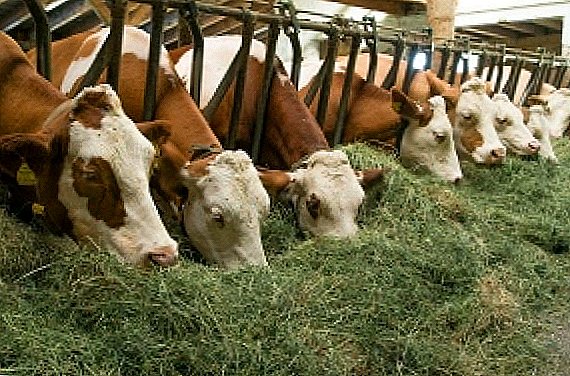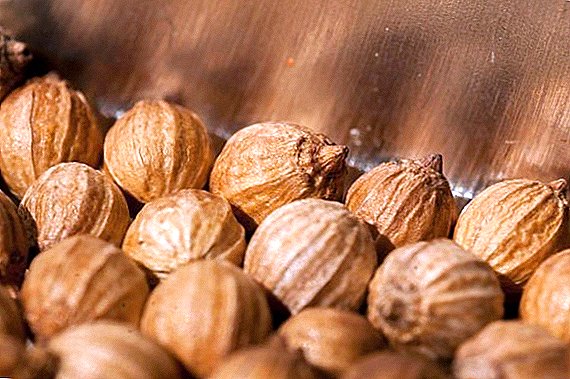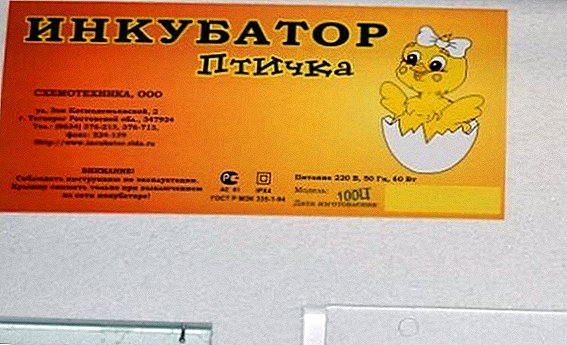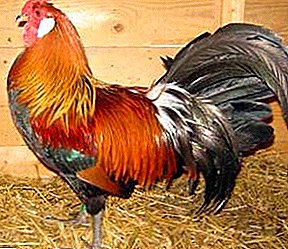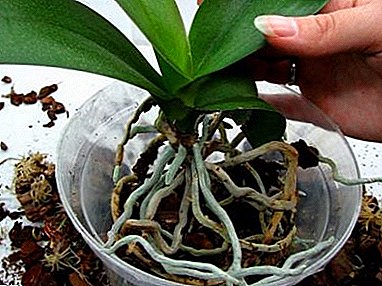 When purchasing rabbits, one should be prepared for some problems, including possible ailments. One of the most dangerous of them is listeriosis, first described in 1892 and noted in 56 countries of the world. Since an effective treatment for this disease has not yet been developed, special attention should be paid to its prevention.
When purchasing rabbits, one should be prepared for some problems, including possible ailments. One of the most dangerous of them is listeriosis, first described in 1892 and noted in 56 countries of the world. Since an effective treatment for this disease has not yet been developed, special attention should be paid to its prevention.
What is listeriosis and how is it dangerous for rabbits?
Listeriosis is an infectious disease of rabbits that lasts from several hours to several weeks and affects various systems and organs of animals. 
There are several types of disease:
- nervous - the central nervous system suffers with convulsions, tremors and paralysis;
- septic - blood infection occurs with fever, inflammation of the lymph nodes and degenerative processes in the internal organs;
- mixed - at the same time, both the work of the internal organs and the nervous system suffer;
- atypical - severe symptoms are absent, however, sick individuals are carriers of listeriosis.
Important! Treatment of cells or inventory with disinfectant solutions, for example, formalin or caustic soda, leads to the death of listeria bacilli within half an hour.
In the case of subacute listeriosis, rabbit immunity tries to resist infection, but the animal usually still dies within 1-2 weeks. If the disease is chronic, the rabbit may survive, but the female remains infertile.
Causative agent and routes of infection
The disease is caused by gram-positive polymorphic listeria listeria (Listeria monocytogenes). It remains alive for a long time and is capable of reproduction in organic tissues and feed even in the cold: in hay and straw - about seven months, in mixed feed - nine months, in urine - up to a year, in soil and water - up to two years old. In this case, heating at a temperature of +100 ° C kills the infection in five minutes. 
There are several ways of infection:
- intrauterine - an infected female infects its offspring through the placenta;
- alimentary - pathogenic sticks come along with food and then from the intestine with the blood flow into other organs;
- respiratory - the disease spreads through airborne droplets;
- straight - the wand enters the body through sores, scratches on the skin or mucous surfaces of the animal.
Did you know? In the old days, rabbits were specially brought to the deserted islands, so that survivors in shipwrecks could have a source of food and safely wait for salvation.
Risk group
Most often, listeriosis is observed in such individuals:
- newborn baby rabbits;
- young animals;
- suckling females.

Incubation period and symptoms
The incubation period of this disease is 7-30 days, it depends on the immunity of the animal and the virulence of the bacterial strain. Symptoms vary according to the form and type of the disease. In case of a lightning current, they do not have time to actively manifest, since the animal dies very quickly.
Acute and subacute forms are characterized by the following symptoms:
- lethargy, weakness, apathy;
- lack of appetite, weight loss;
- indigestion, diarrhea;
- high body temperature - up to +40 ° С;
- dropping back of the head;
- tremor, convulsions and paralysis of the limbs;
- spontaneous abortions of females.

Diagnosis and pathological changes
The diagnosis is established based on typical symptoms, pathological data and test results. Blood or its serum is sent to the study, and after the death of animals, samples of the liver, lungs, kidney, spleen, heart or brain are sent. From sexually mature rabbit necessarily taken part of the uterus and its contents. On the obtained material bacteriological analysis is carried out and the causative agent of listeriosis is isolated.
If in doubt, bioprobes are carried out on white mice, guinea pigs or healthy rabbits. If necessary, accelerate the diagnosis using the method of luminescent antibodies. A serological blood test is performed to detect the underlying disease.
Did you know? The smallest breed of rabbits is called the pygmy rabbit or Little Idaho. An adult individual of this breed weighs no more than 450 g, and its body length is only 22-25 cm.
Pathological examinations of dead animals in the nervous form of the disease show swelling and hemorrhages in the brain and in some organs. In septic form, there is hyperemia and edema of the lung tissue, inflammation of the mucous membrane of the esophagus, heart hemorrhage, enlargement of the spleen and lymph nodes, pathological processes in the liver, spleen, kidneys and myocardium.  The most radical changes are found in the genitals of animals. Rabbits have endometritis or metritis, thickening and inflammation of the mucous surface. A dirty brownish liquid and decomposed fruits are found in the womb of the suckling females.
The most radical changes are found in the genitals of animals. Rabbits have endometritis or metritis, thickening and inflammation of the mucous surface. A dirty brownish liquid and decomposed fruits are found in the womb of the suckling females.
Is it possible to cure
Unfortunately, today there are no effective means of treating this disease, therefore, infected animals are immediately destroyed and burned in order to prevent the spread of the disease. In addition, rabbits do not have very strong immunity, and their listeriosis usually progresses rapidly.
Sick or probably infected individuals should be immediately removed, and the cells treated with formalin solution, caustic soda or fire from a blowtorch, and for the remaining individuals to establish constant monitoring.
Learn how to treat rabbit diseases and whether they pose a threat to human health.
Is it possible to eat the meat of an infected rabbit
One of the reasons for the inappropriate treatment of rabbits infected with listeriosis is that such an individual remains a carrier of the disease and creates a threat of infection in humans, therefore it is strictly prohibited to eat the meat of sick animals and carriers of infection.
Important! The main danger of the disease is that it can cause dire consequences for people - encephalitis and meningoencephalitis. For this reason, preventive measures should be given the greatest attention.
Preventive measures
As a preventive measure, rabbits are vaccinated with dry live listeriosis vaccine. Protective immunity begins to act after 1.5-2 weeks after vaccination and lasts for up to six months. Although vaccination is not mandatory, however, if an outbreak of this disease has occurred in the nearest farms, it is better to vaccinate animals. 
Preventive measures against listeriosis:
- mandatory 30-day quarantine of new animals;
- daily inspection of animals;
- constant quality control of feed;
- regular cleaning and disinfection of cells, equipment and the whole room;
- the destruction of rodents, ticks and other blood-sucking insects;
- periodic laboratory tests of captured rodents for listeriosis;
- careful consideration of abortions and stillbirths;
- checking rabbits before transferring them to other farms;
- the use of protective equipment by workers - masks, gloves, and replacement clothing.
Read also about how to care for rabbits and how to feed them.
So, now you know how dangerous listeriosis is. In the case of suspicion of infection, you should immediately isolate the animal and take all necessary measures so as not to lose all the livestock. Only the constant observance of preventive measures will help to secure the rabbits as much as possible against possible infection.


